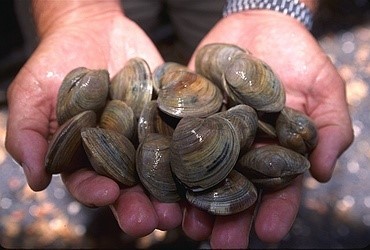LINAP Newsletter - April 2018
The New York State Department of Environmental Conservation sent this bulletin on 04/30/2018 04:48 PM EDT |
| DEC Delivers - Information to keep you connected and informed from the NYS Department of Environmental Conservation |
| Share or view as a web page || Update preferences or unsubscribe |
|
|
Long Island Nitrogen Action Plan (LINAP) NewsletterApril 2018Visit NYSDEC's LINAP webpage for more information about LINAP, past newsletters, This issue's topics:
Long Island Sound Study - Bioextraction CoordinatorBioextraction is a means of improving water quality by removing excessive nitrogen through the cultivation or harvest of seaweeds and shellfish. The United States Environmental Protection Agency made funding available through a Long Island Sound Study grant to hire a Bioextraction Coordinator. Nelle D’Aversa was hired to prepare the guidelines needed by decision makers to facilitate bioextraction operations in New York and Connecticut coastal waters. The project will assess the efficacy of, and potential challenges involved in, advancing seaweed and shellfish aquaculture to remove excessive nitrogen loads. Ms. D’Aversa will review and report on relevant literature and recommend actions to streamline the regulatory process to accelerate implementation. The project will deliver GIS tools and methods to identify and communicate potential bioextraction sites and will create a workgroup of professionals and stakeholders who will work towards advancing bioextraction. Restore New York Shellfish and the Shellfish Restoration CouncilIn September 2017, Governor Andrew M. Cuomo announced a $10.4 million effort to improve Long Island's water quality and bolster the economies and resiliency of coastal communities by restoring native shellfish populations. The Restore New York Shellfish initiative is establishing five new shellfish sanctuaries that will be managed by SUNY Stony Brook and Cornell Cooperative Extension in partnership with municipalities and volunteer organizations. Suffolk County sanctuaries will include portions of Bellport Bay, Shinnecock Bay and Huntington Harbor. Nassau County sites include parts of Hempstead and South Oyster Bay. Up to 179 million shellfish will be grown in Long Island's hatcheries and seeded in each of the selected waterbodies over the next two years. The Shellfish Restoration Council was established to support and guide the shellfish restoration efforts throughout New York's coastal waters. The council is co-chaired by SUNY Stony Brook, Cornell Cooperative Extension and the Billion Oyster Project to provide recommendations on coordination, management and monitoring of restoration efforts, identify future restoration initiatives, and coordinate training and education programs throughout the New York Marine and Coastal District. Center for Clean Water Technology - Nitrogen Removing BiofiltersNew York State’s Center for Clean Water Technology will install the first of three Nitrogen Reducing Biofilter (NRB) systems in Shirley, New York. The Center designed and developed NRBs as on-site wastewater treatment systems that remove large amounts of nitrogen and other contaminants. As passive systems, they contain few moving parts and operate largely by gravity, making them low-energy, low-maintenance, and low cost. The Center for Clean Water Technology, funded by the NYS Environmental Protection Fund and administered by the NYS Department of Environmental Conservation, was founded to discover, research, and develop novel technologies that could be used to replace existing septic systems with innovative and alternative (IA) systems that remove more nitrogen, are reliable, and are cost efficient. The NRBs represent one of the early advances in IA systems by the Center. |


